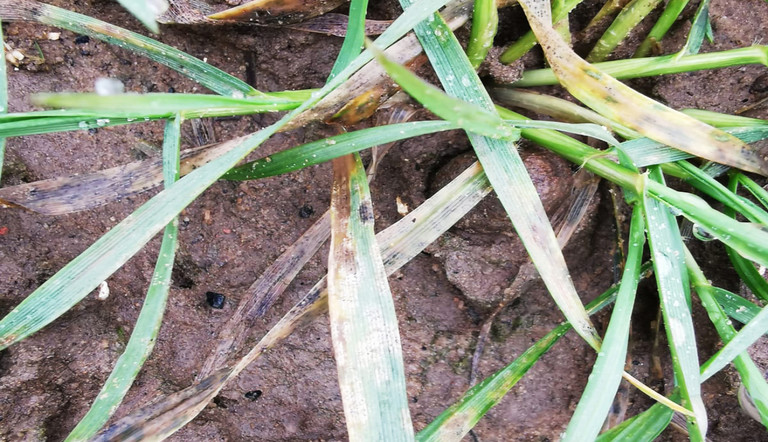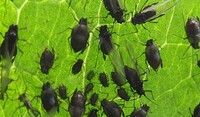
New cropping year, new challenges

How did last autumn’s drilling window unfold in your region, and what challenges did growers face?
Will Nicholls, Regional Agronomy Manager, North and North Midlands: For once, the autumn was considerably kinder compared to recent years, with favourable conditions enabling cultivation and drilling workloads to be carried out largely unhindered. The beneficial conditions also provided the opportunity for growers to delay drilling where weed pressure was high and to get ahead on those fields less at risk.
However, not everything went to plan, with some growers forced to delay drilling due to supply chain issues which delayed seed deliveries. Thankfully, for once, this wasn’t necessarily a bad thing with the main pinch point in terms of whether or not to defer drilling coming down to strength of nerve, especially as many growers are still rueing the wet conditions which had so significantly hampered drilling progress in recent wetter autumns.
The favourable autumn conditions also allowed pre-emergence herbicides to be applied in good time, with adequate residual soil moisture available to ensure they worked well. As a result crop establishment for cereals and oilseed rape has been good, with some forward, lush canopies heading through the winter.
The most obvious challenge facing growers so far this year has been the rapid and significant increase in fertiliser prices. For those who purchased their fertiliser early enough, or where seed was already on farm, very little has changed in terms of cropping decisions, although there has been noticeably more talk and focus on only applying exactly what each specific crop requires throughout the season.
On the other hand, where seed and fertiliser wasn’t pre-purchased, it has been suggested that growers will limit their exposure to higher input costs by placing a greater emphasis on spring sown crops including beans which require less nitrogen compared to the more mainstream cereals.
Holly Pratt, Regional Agronomy Manager, East: Autumn 2021’s drilling conditions proved to be very favourable for the majority of the time with the delayed harvest meaning there was a very quick turnaround between harvest and drilling in some cases.
Crops were drilled throughout the autumn, with the memory of the last two wet years prompting many growers to start the new cropping cycle in September and in doing so accepting that they may see an increase in black-grass pressure.
Further east, more favourable conditions meant some winter cereals were still going in after a late sugar beet harvest, with seed drills still working into December and January.
Those crops that were drilled early are currently looking well, although some might say they are too forward. On the other hand, the later drilled crops are looking a little more hit and miss, but in general, still looking fair for their drill timing.
Jodie Littleford, Regional Agronomy Manager, North East: Conditions at the backend of 2021 were very favourable to drilling in the North East, with a fair acreage of cereals going into the ground right through the autumn drilling window. In fact, while many growers stuck to their original cultivation and drilling plans despite the sharp rises in fertilisers prices, a few even opted to take advantage of the good conditions and buoyant grain prices by drilling more cereals than originally planned.
In terms of drilling dates, there were the more eager growers who wanted to start drilling as soon as they could, and those who preferred to wait for stale seedbeds to flush before even thinking about getting the drill out. After two consecutive seasons of wet and difficult conditions it’s no surprise some growers were keen to get crops established early, but that’s not to say delayed drilling practices were forgotten altogether in fields with severe grassweed problems.
For some, getting hold of seed at the start of the autumn campaign was a challenge, but there was no lack of opportunity to drill when it did turn up on farm, with crops on the whole establishing very well thanks to the warm conditions. Unlike the previous couple of years plants weren’t left sitting with wet feet which allowed for more even and uniform establishment.
Where oilseed rape was drilled early, crops got up and grew away quickly from the threat of adult flea beetle grazing and subsequently went into the winter with lush canopies already well developed. On the other hand, OSR crops that were drilled later in the season were a lot slower to get going, especially where slugs and flea beetle were causing additional concern.
Jonny Oosthuizen, Regional Agronomy Manager, South West: In general, last autumn produced some of the best drilling and spraying conditions we’ve seen for years in the South West. For once, the weather was relatively predictable, which made planning cultivations, drilling and residual herbicide applications all the easier. Some growers and agronomists have even commented that in terms of practicality – “getting things done” – it was the easiest autumn ever.
In many situations, where the weather, seedbed conditions and access to seed were favourable, there was no delay and a significant number of crops were drilled around the end of September and into early October. Delayed drilling happened where necessary to control black-grass in badly affected areas. Again, this wasn’t an issue given the favourable conditions which allowed growers plenty of opportunity to optimize the use of stale seedbeds prior to drilling.
We’ve seen a continuation of cover cropping strategies in the South West (with some minor rotational adjustments owing to the price and availability of fertiliser) along with a steady integration of regenerative principles.
How have those crops sown in the autumn fared over the winter?
Will (North): The mild conditions running up to the Christmas break helped cereals to grow away rapidly, resulting in some very forward crops going into the spring. By and large these have remained relatively disease free, with only low levels of Septoria tritici and Powdery Mildew evident.
A run of cooler weather and a string of frosts in late December to early January has naturally slowed the development of diseases, though some symptoms can still be found particularly in less disease resistant varieties: with this in mind, it would be worth considering a slightly more robust approach at T0, with the inclusion of Arizona (folpet) at 1.0L/ha as a tank mix partner with other chemistry depending on the disease risk.
Oilseed rape is also looking well at present, with dense, healthy canopies coming out of the winter. For many, the threat of pigeon damage will be high on the radar, although the more forward crops should be able to withstand a certain amount of grazing. The bigger threat will be to later drilled crops, so it’s worth keeping a close eye on proceedings and making sure there’s plenty of gas in the bangers.
Holly (East): The winter has been fairly mild so far, with a below average amount of rain compared to the 20 year average, with the lack of any severe frosts resulting in an increase in disease pressure in those early drilled crops. The dry conditions have also allowed spring drilling to commence, although the ongoing dry and windy conditions will make getting the best efficacy out of pre-emergence herbicides something of a challenge.
The single biggest challenge facing growers at the moment is the increase in fertiliser costs and the choices that need to be made to ensure what fertiliser growers have available is used most effectively. This is obviously going to be a significant issue where fertiliser wasn’t purchased in advance of the price rises taking effect, and for those growers for whom the favourable autumn conditions resulted in them planting a larger area of winter cereals than they had initially planned for.
Jodie (North East): The North East has had a relatively dry and mild winter compared to the average which allowed propyzamide applications to go on for those fields that needed it. A handful of frosts have checked some OSR canopies and snuffed out some juvenile rust infections in cereals, but some wheat crops are still carrying quite a high level of septoria. Some thick barley crops are also carrying a fair bit of net blotch and mildew in places which will need monitoring.
OSR crops are, overall, looking pretty good, but any damage from larval feeding is yet to be fully realised. Pigeons are also causing a headache in a few patchy rape fields, stripping plants right back to the growing point so it’ll be interesting to see if these crops recover.
Cereals, again, have generally fared well but are carrying quite high disease burdens in places, so they will need careful management going into spring. Overall, the crop potential coming out of the winter months is looking the best it’s been for a couple of years but there’s still a fair way to go until harvest.
At the risk of stating the obvious, the biggest issue over the winter has been the escalation of fertiliser prices which is a significant worry for those who didn’t buy early. Thankfully grain prices have also risen which has gone someway to ease peoples’ fears around cutting rates back too drastically.
Jonny (South West): With crops in the ground and establishing well (even rape crops look well where the pigeons have stayed away), the favourable conditions continued into the winter: we certainly haven’t seen the major extremes in weather that have plagued recent years, with extended cold spells being few and far between – hence the current disease levels.
The most notable challenge growers have had to deal with this winter has been how to plan their fertiliser strategies. With the ‘New Season’ fertiliser prices being as high as they were, it required a ‘back to the drawing board’ approach and consultations with advisors and agronomists ensued. Once again, the people of this industry have shown their dynamism and stoicism in the face of considerable challenges.
How are crops looking now and what should growers be wary of as the spring approaches?
Will (North): Existing crops are at a range of growth stages depending on drilling date, with most cereals tillering well and providing suitable ground cover. One or two weeds are starting to appear, with groundsel becoming more prominent year on year. Tower (CTU+DFF+PDM) offers some good control against this weed and is a good bad option for a spring application to target the more difficult broad-leaved weeds: the cut off for this product is at the pseudostem erect stage (GS 30).
Ground conditions in most parts are ideal for the preparation of spring seed beds with growers ready and waiting to start planting as soon as soil temperatures increase and stabilise. However, for some growers, particularly those in the eastern reaches of my region, soil moisture availability could be a limiting factor with soils seeming very dry for the time of year. If these eastern reaches receive some decent precipitation without it hindering field work, I expect we’ll see drills working sooner rather than later, especially as there’s undoubtedly a fear that we’re ‘owed a wet spring’.
To ensure crops remain disease-free throughout the spring, growers and agronomists should consider the value of using the multi-site fungicide, folpet, in combination with single site chemistry at T0 – particularly in those wheat varieties which are more susceptible to septoria. The rationale here is that we saw a lot of disease coming through later in the season last year, with growers subsequently struggling to regain control and therefore losing yield. Including folpet at 1.0L/ha at T0, T1 and T2 will help to prevent diseases such as Septoria Tritici from really taking hold, with folpet also providing the additional benefit of protecting the remaining single site fungicides from disease resistance.
In terms of weed control, the main thing to remember is to be mindful of water rates and forward speed, especially when tackling plants such as wild oats in crops with a well-developed canopy: herbicides such as Topik (clodinafop-propargyl) should be applied in 200L/ha water at no more than 12km/h to ensure good penetration into the canopy and to enable the herbicide to target the weed’s roots more rapidly.
Holly (East): Cereal crops in the east are at a range of growth stages at the moment, with some forward crops well into tillering and later drilled crops with a couple of true leaves.
Diseases are visible in early drilled crops, with later crops so far avoiding the worst of the pressure.
Ground conditions have remained fair, and where conditions have allowed, spring cereal drilling has begun.
Nutrition and crop protection planning are also keeping growers busy: we’re recommending that spring spray programmes focus on providing a good level of protectant activity as it is no longer always possible to rely on curative control once diseases have taken hold. With that in mind, cereals at a heightened risk of disease should be treated with three applications of Arizona (folpet) at 1.0L/ha at T0, T1 and T2. In lower risk situations it might be more appropriate to only apply Arizona at T1 at a rate of 1.5L/ha.
In terms of wild oat control, we’re recommending the use of the herbicide Topik (240 g/L clodinafop-propargyl and 60 g/L cloquintocet-mexyl) which should be applied as accurately as possible to maximise its biological efficacy: essentially this means making applications at an appropriate operating speed, water volume and dose rate, and with a spray nozzle which will guarantee full coverage of the target plants which may be protected by the crop’s canopy.
For sugar beet growers, where the loss of desmedipham has left a gap in their weed control strategies, it may be worth considering the application of a pre-emergence herbicide in order to kickstart weed control and to create some latitude in terms of the application timing of post-emergence treatments.
Jodie (North East): The majority of crops are currently looking very well, although there are still some hungry pigeons around which are adding insult to injury in those already patchy OSR fields.
Cereals are tillering well, and the first fertiliser applications will be going on soon, as will some manganese where it’s needed. Spring drilling will also commence imminently but in the meantime fertiliser planning and prioritising fields for crop protection applications are keeping the grey cells active: despite any mention of rust still quite sporadic, there is plenty of septoria about with pressure building steadily. Growers will therefore need to think about including a multi-site fungicide such as Arizona (500 g/l folpet) in their spray programmes, not only to give additional efficacy against the main cereal diseases, but also to protect single site active ingredients and to boost yields.
In terms of maximising weed control this spring, attention to detail will be essential: crops drilled into a moist, fine and firm seedbed will see the best protection from applied herbicides as these conditions will maximise the efficacy of residual products while also minimising the risk of any effect on the crop itself.
Jonny (South West): If anything, many crops in the South West are looking ‘too good’ thanks to their early drilling and the higher than usual temperatures over the winter and into the New Year.
There is plenty of disease about, even in tolerant varieties: this is often the case and normally this early disease would be knocked-out by some colder temperatures, but we’ll have to wait and see if that’s the case this year.
Progress and current priorities are being determined by cropping plans and soil type: where growers are dealing with more forgiving soils, spring drilling has already started, and in some places is well on the way to being completed. This, however, isn’t the case where heavier soils are still too wet, although the lenient weather conditions throughout January have allowed some to get a head start in terms of seedbed preparations. There is however still a lot of work to do: indeed, the efficacy of residual herbicides relies on moisture being present in the soil and this will be a consideration for growers on lighter soils yet to drill.
There seems to be a divide in terms of those putting on some early N fertiliser now, and others fervently holding off. Either way, the fertiliser spinner, along with the drill and rolls, are all in the line-of-sight for most growers and I imagine the bulk of growers will be kicking off their spring operations this month if conditions remain favourable.
All that remains is for growers to plan early, plan for the long term and plan for success: hindsight and experience tell us that prevention is always better than cure, so it’s important to remain on the front foot and to stay ahead in terms of weed control and disease prevention. It’s also important for growers and advisors to plan not only for this season, but for the years to follow. For that reason, disease control programmes should include a multi-site fungicide such as folpet which will combat disease and allow other products to remain effective for seasons to come.
And if there’s one lesson we learned last year, it’s not to hold back when you’re getting good results. Often, when things are looking green and clean, it can be tempting to hold back. Obviously, the weather conditions and disease pressure influence our approach, but it’s important to remember that crop production is the engine room of most arable farms, and yield is often how we measure performance. Return on investment is optimized with appropriate rates of proven chemistry, applied at the right timings, resulting in bigger yields. So, just because crops might look clean, it doesn’t pay to substitute your best laid plans for a less robust approach.






